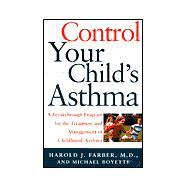
| Acknowledgments | xi | ||||
| How to Use This Book | xv | ||||
| Introduction: The Mystery Epidemic | xvii | ||||
| Part 1: The Asthma Revolution | |||||
|
3 | (4) | |||
|
7 | (4) | |||
|
11 | (8) | |||
|
19 | (6) | |||
| Part 2: The Three Lines of Defense | |||||
|
25 | (11) | |||
|
36 | (20) | |||
|
56 | (25) | |||
|
81 | (19) | |||
|
100 | (23) | |||
| Part 3: Parents' Guide | |||||
|
123 | (10) | |||
|
133 | (6) | |||
|
139 | (15) | |||
|
154 | (5) | |||
|
159 | (6) | |||
|
165 | (3) | |||
|
168 | (13) | |||
|
181 | (6) | |||
|
187 | (6) | |||
|
193 | (8) | |||
| Notes | 201 | (12) | |||
| Appendix A: Daily Asthma Diary | 213 | (1) | |||
| Appendix B: Average Peak Flow Rates for Children | 214 | (2) | |||
| Appendix C: Selected Asthma Resources | 216 | (7) | |||
| Index | 223 |
The New copy of this book will include any supplemental materials advertised. Please check the title of the book to determine if it should include any access cards, study guides, lab manuals, CDs, etc.
The Used, Rental and eBook copies of this book are not guaranteed to include any supplemental materials. Typically, only the book itself is included. This is true even if the title states it includes any access cards, study guides, lab manuals, CDs, etc.
Excerpted from Control Your Child's Asthma: A Breakthrough Program for the Treatment and Management of Childhood Asthma by Harold J. Farber, Michael Boyette
All rights reserved by the original copyright owners. Excerpts are provided for display purposes only and may not be reproduced, reprinted or distributed without the written permission of the publisher.